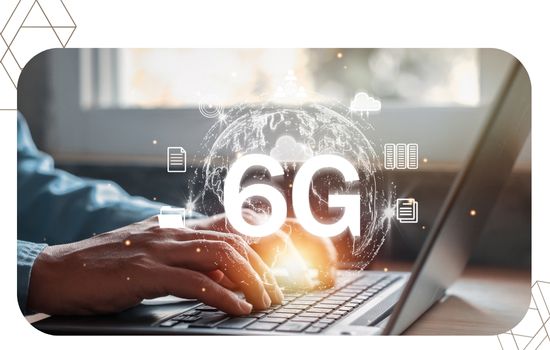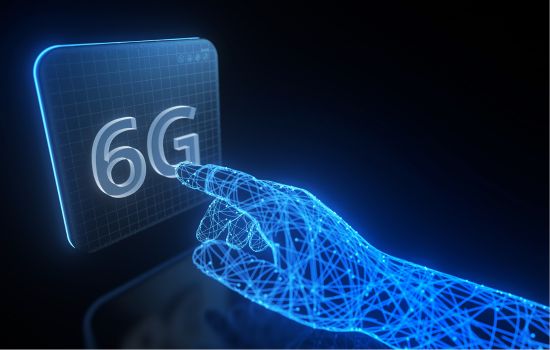Advertisements

The arrival of 6G Internet: What to Expect from the Next Digital Revolution It is no longer a science fiction topic, but an urgent conversation involving governments, technology companies, and millions of users around the world.
The transition from 5G to 6G promises a qualitative leap that will transform not only the way we connect, but also how we live, work, and understand digital reality.
In this analysis you will find:
- What 6G really means and how it differs from 5G.
- The most anticipated and disruptive applications that will change entire industries.
- A look at the countries leading the development and testing of this technology.
- The social, economic and cultural impact it could have on daily life.
And an inevitable question arises: Are we prepared for speed and connectivity that will surpass any previously known limits?
The starting point towards a new era
5G opened the door to faster and more efficient connectivity, but 6G aims to multiply that capacity exponentially.
Advertisements
According to a report by the International Telecommunication Union (ITU), this network is expected to reach speeds of up to 1 terabit per second, which is equivalent to downloading an 8K movie in just a few seconds.
This improvement isn't limited to speed. We're talking ultra-low latencies of just microseconds, essential for applications such as autonomous vehicles, remote surgery, or immersive extended reality experiences.
From speed to integrated intelligence
The real innovation of 6G is that it will not only be a faster network, but also a smarter one.
Unlike its predecessors, this generation will integrate artificial intelligence algorithms into the connectivity infrastructure itself.
This will allow the network to self-manage, anticipate peak demand, and optimize resources in real time.
Imagine a packed stadium during a concert: today, the internet is jammed due to user saturation, but with 6G, the network will be able to dynamically adapt to ensure fluidity on every device.
Close example: digital health in Mexico
In public and private hospitals, connectivity remains a challenge. With 6G, telemedicine will reach a new level, enabling consultations with seamless ultra-high-definition images, as well as diagnoses based on data sent in real time from handheld devices.
A clear example: a patient with heart problems could wear a sensor connected to the 6G network that alerts their doctor in milliseconds if an anomaly occurs, reducing the risk of serious emergencies.
Global example: precision agriculture
Beyond health, the agricultural sector will also benefit. Countries with large areas of agricultural land will be able to use 6G-connected sensors to monitor moisture, nutrients, and pests simultaneously and with surgical precision.
As a result, production will be optimized, reducing costs and waste.
Comparative table between 5G and 6G
| Feature | 5G | 6G (expected 2030) |
|---|---|---|
| Maximum speed | 10 Gbps | 1 Tbps |
| Latency | 1-10 ms | <1 ms (microseconds) |
| Connections per km² | 1 million | 10 million |
| Key applications | IoT, 4K streaming, smart cities | Integrated AI, holograms, full extended reality, digital teleportation |

Read more: History of video games: from 8-bit to virtual reality
Economic and social impact
According to a study by Ericsson and Qualcomm published in 2024, the digital economy powered by 6G could contribute more than $1.3 trillion to global GDP by 2035.
Growth will be reflected in sectors such as manufacturing, logistics, healthcare, and education.
Beyond the financial aspect, the social change will be profound. New job opportunities related to big data management, cybersecurity, and immersive application development will open up.
But challenges will also arise, such as digital inclusion in rural communities and privacy protection.
An analogy to measure the leap
If the transition from 4G to 5G was like changing from a conventional road to a multi-lane highway, the transition to 6G is like having unlimited air highways.
Not only will there be more space and speed, but there will also be new ways of getting around that will transform the entire travel experience.
Countries leading the race
China, South Korea, Japan, the United States, and the European Union are already investing millions of dollars in research and pilot tests.
In 2023, South Korea conducted an experimental transmission using 6G technology that reached 500 Gbps under laboratory conditions.
Mexico, for its part, is preparing to keep up. The Federal Telecommunications Institute (IFT) has declared that the country must begin regulatory testing before 2027 to lay the groundwork for the adoption of this network.
Challenges to face
Enthusiasm should not obscure the obstacles. The necessary infrastructure will be more complex and expensive than ever.
In addition, new security standards will be required to prevent vulnerabilities in a hyperconnected world.
Energy sustainability is another critical point. 6G networks, although more efficient, will require a massive volume of base stations and data centers, necessitating a parallel transition to renewable energy.
What does it mean for the average user?
While the most advanced benefits will be seen in industries, everyday life will also change.
Home entertainment will reach a new level of realism, with interactive holograms and immersive experiences that will surpass traditional cinema.
Students will be able to attend virtual classes in three-dimensional environments, while e-commerce will transform into shopping experiences in virtual environments with products that can be digitally "tried on" before purchasing.
Conclusion
The arrival of 6G Internet: What to Expect from the Next Digital Revolution It is inevitable and is closer than it seems.
It's not just about a faster network, but about an infrastructure that will integrate intelligence, energy efficiency, and new applications that will directly impact daily life.
The challenge lies in balancing innovation with social and environmental responsibility. History shows that every technological leap redefines the way we interact, and 6G will be no exception.
The question is: will we seize this opportunity to build a more inclusive and sustainable future?
Read more: Key differences between 4G, 5G and 6G
Frequently Asked Questions (FAQ)
1. When will 6G hit the market?
Commercial deployment is expected to begin around 2030, although pilot tests are already underway in several countries.
2. What is the difference between 6G and 5G?
Speed, ultra-low latency, and the integration of artificial intelligence into the network are the key changes.
3. Will Mexico have access to 6G in its first phase?
Probably not at the global launch, but the country is already working on regulatory guidelines for its arrival between 2030 and 2032.
4. Will 6G be more expensive for the end user?
Initially, yes, as was the case with 5G, but costs are expected to decrease over time as the infrastructure becomes more widespread.
5. What applications will be seen first with 6G?
Interactive holograms, advanced telemedicine, and immersive experiences in education and entertainment.
6. Does 6G pose more privacy risks?
Yes, handling massive amounts of data in real time will require stricter cybersecurity regulations.
7. How will it impact daily life?
It will transform everything from the way we consume entertainment to how we work, study, and take care of our health.